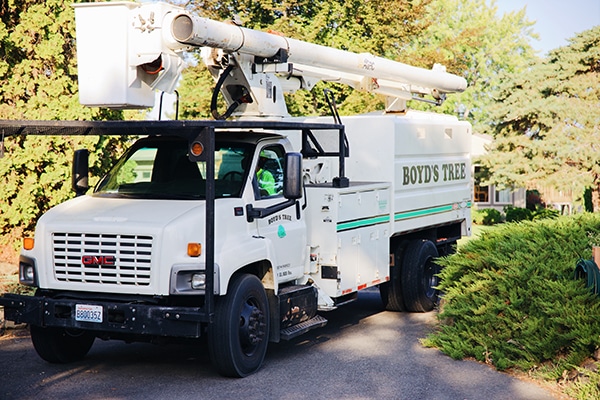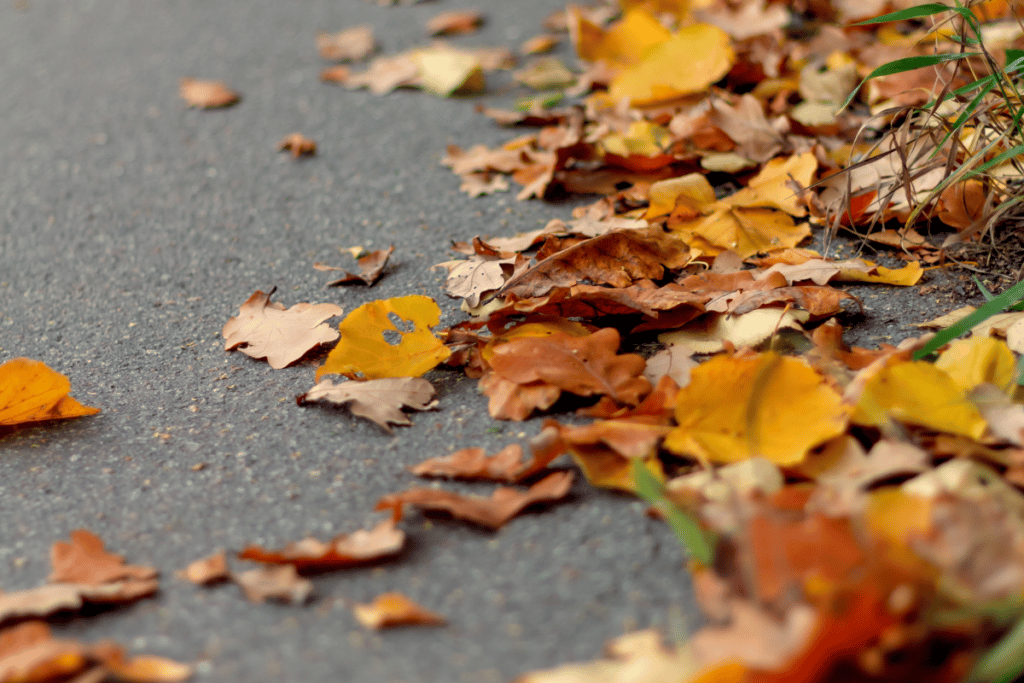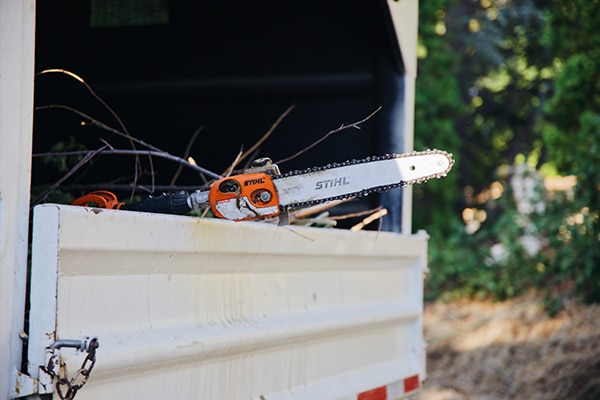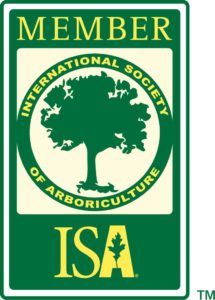There are many ways to prune a tree and many reasons to do so. When you observe your tree is too tall for your liking, your initial instinct may be to chop off the top. But when it comes to topping your tree, that would pose a major threat to its health and well-being. Under no circumstances should you engage in topping, as the consequences could be severe for the tree.
Topping is one of the most harmful tree pruning practices there is. Despite the well-known detriments to topping a tree, topping remains an all-too-common practice.
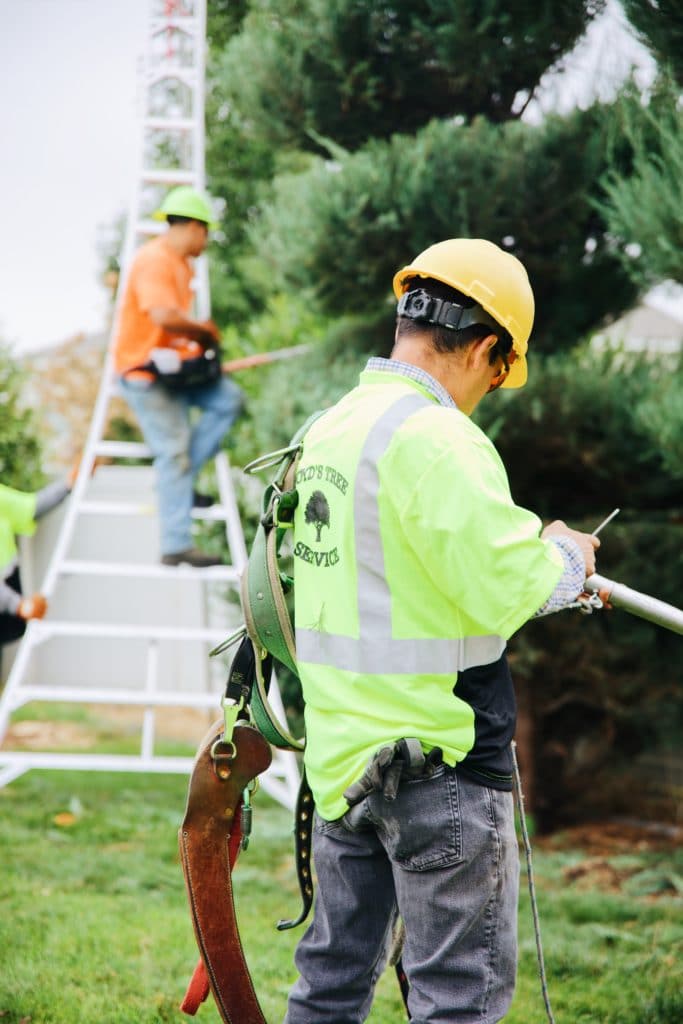
What is Topping?
Topping is the practice of removing whole tops of trees or large branches and/or trunks from the tops of trees, leaving stubs or lateral branches that are too small to assume the role of a terminal leader. The tree is then greatly weakened with unstable limbs and a bare, unnatural appearance. As a result, your tree is much more inclined to breaking and could pose a risk hazard.
Topping is not considered a viable method of height reduction for a tree. Topping will make a tree more hazardous in the long term.
Other common names for the practice include hat-racking, heading, rounding over, and tipping.
Some of the main reasons people choose to top trees are:
- Fix trees that interfere with electrical wires.
- Shorten trees that grow too tall close to a home.
- Prevent a tall tree from coming down and causing damage during a storm.
Why You Should Not Top Your Tree
Topping Stresses a Tree
When you top a tree, it removes half to 100 percent of the leaf-bearing crown of a tree. The harshness of this type of pruning prompts a survival mechanism in the tree. The tree triggers latent buds which forces the rapid growth of numerous shoots below each cut.
The tree is forced to generate a new crop of leaves right away. If the tree does not have the stored energy reserves to perform this task, it will be significantly weakened and die. A tree that is under this type of severe stress is more susceptible to insect and disease infestations. What’s more, large, open pruning wounds expose the sapwood and heartwood to attacks. The attenuated tree doesn’t have the necessary energy to chemically defend the wounds against invasion by insects.
Topping Starves the Tree
When you engage in topping a tree, you remove most or all of the tree canopy. This causes a substantial decrease in its food production that occurs through the process of photosynthesis in foliage. In essence, by removing so many leaves, you are stripping away the tree’s sole food source.
Topping a Tree Causes Decay
When pruning a tree, the appropriate place to cut is slightly beyond the branch collar at the branches point of attachment. The tree is biologically capable of closing this wound as long as the tree is healthy and the wound is not too big.
However, if you cut a tree along a limb between lateral branches, you create stubs with wounds that the tree might not be able to close. The bare wood tissues start to decay. In most circumstances, a tree will compartmentalize the decaying tissues, however, most trees cannot defend the multiple severe wounds that are caused by topping. The result is decaying organisms that have a clear path to move down through the branches.
Tree Topping Leads to Weak Limbs
The new limbs that will grow swiftly will be considerably weaker than normal limb growth. The process that causes weaker limbs involves the growth of new cells in the new limbs being elongated because of the faster growth, thus making these limbs weaker. Weaker limbs can also happen as a result of weaker limb attachment.
Topping Can Create Hazards
Trees come equipped with a survival mechanism to produce numerous shoots below each topping cut. These shoots develop from buds adjacent to the surface of the old branches. In contrast to normal branches – which develop in a socket of overlapping wood tissues – the new shoots are anchored just in the outermost layers of the parent branches.
The new shoots grow extremely fast – up to 20 feet in a year – in certain species. Unfortunately for the tree, these shoots are quite vulnerable to breaking, especially when it is windy.
As a result, the topping of the tree actually makes it more hazardous than when it was taller and posed a potential safety risk.
Topping Can be Expensive
Topping a tree can prove to be a costly mistake in a few ways. For example, if the tree survives topping, it will require pruning again in a few years. It will either have to be reduced in height again or storm damage will need to be cleaned up. If the tree perishes, it will need to be removed.
It is worth noting that topping is a high maintenance pruning practice, and there are additional costs to topping that you might not be aware of. One such expense is the potential reduction of your property value. Healthy, well-maintained trees could add anywhere between 10 percent to 20 percent to the value of your property. Unsightly, topped trees could reduce your property value.
Then you have the cost associated with potential liability. Topped trees are likely to break and pose a serious hazard to your property and your neighbor’s property. Because topping is perceived to be an unacceptable pruning practice, any damage caused by branch failure of a topped tree could result in a finding of negligence in a court of law.
Learn more information about the dangers of tree topping and some healthy alternatives!
Let Boyd’s Tree Service Help Keep Your Trees Healthy and Thriving
At Boyd’s Tree Service, we are a full-service tree and stump removal business that serves the Tri-Cities and surrounding areas. Boyd’s Tree Service is a fully insured and bonded tree removal contractor with many years of experience with tree care and tree removal.
You’ll find that at Boyd’s Tree Service – comprised of fourth-generation tree men – we provide the most comprehensive tree care. Because we live and work in this community, we understand what it takes for trees and properties to thrive in our unique climate. We take pride in enhancing the well-being, beauty and aesthetics of your trees.
If you live in the Tri-Cities and surrounding areas and you would like more information about our tree services, or to schedule an appointment, we invite you to call Boyd’s Tree Service at (509) 585-4194.

